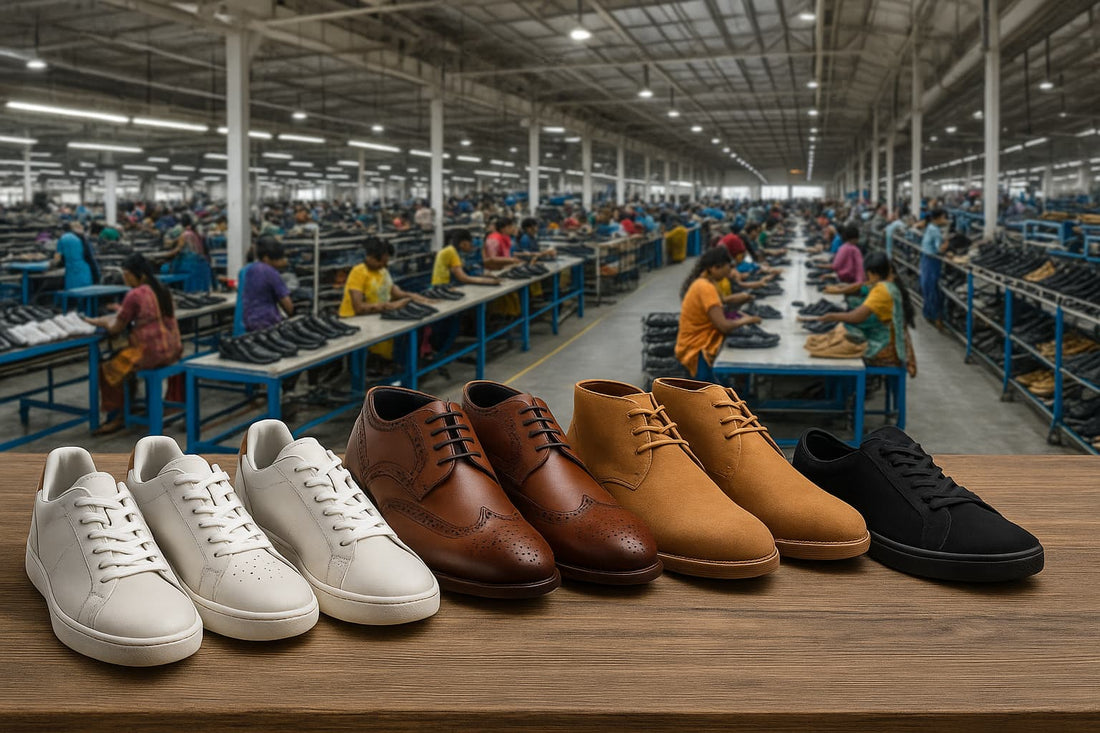The Growing Footwear Industry in India: Trends, Challenges, and Opportunities

The footwear industry in India is a key pillar of the nation’s economy, generating employment and driving industrial progress. With a blend of traditional craftsmanship and modern production methods, the sector has experienced steady growth, serving both domestic and international markets.
Despite its expansion, it continues to encounter various challenges that impact its overall development. This article aims to provide a clear understanding of the footwear market in india, exploring its growth trends, major challenges, and potential opportunities for future development.
By examining industry shifts and emerging opportunities, we highlight how businesses can navigate challenges and sustain long-term success in this changing market.

Evolution of the Footwear Market in India
The footwear business has grown beyond basic necessity, becoming a key part of the fashion and lifestyle market. With increasing digital influence, consumer preferences are shifting, driving strong demand for stylish and diverse footwear.
E-commerce has opened new opportunities for SMEs, especially in tier II and III cities, allowing them to reach customers nationwide. This shift has also introduced modern retail models like multichannel, omnichannel, and direct-to-consumer (D2C).
In 2025, the footwear market size in india is expected to generate US$29.2 billion in revenue, highlighting its rapid expansion. As digitalisation continues, firms must adapt to emerging trends to stay competitive and grow.
Current Trends in the Footwear Industry in India
The Indian footwear industry is expanding due to rising disposable incomes and evolving fashion trends. Growing awareness of global styles has increased consumer demand for diverse options. E-commerce and digital innovations have made footwear more accessible across regions. These factors continue to shape the market's growth and competition:
Sustainable and Ethical Practices
Consumers are increasingly prioritising sustainability and ethical sourcing in their purchasing decisions. Brands focusing on eco-friendly materials and responsible production methods are gaining popularity.
Sustainable footwear options are becoming a key market trend. This shift is pushing the industry toward more responsible and transparent practices.
Technology Integration
Advanced technologies like 3D printing, automation, and AI are transforming production processes. Footwear manufacturing companies in India are using these innovations to improve efficiency and quality. These advancements enable cost-effective manufacturing and better design possibilities.
Omni-Channel Strategy
With footwear now a key part of fashion, brands must ensure a seamless experience across all platforms. An effective omni-channel strategy connects online and offline sales, improving efficiency. This approach helps businesses reduce operational challenges and enhance customer satisfaction.
Personalisation
Customisation is becoming a major trend, as consumers seek footwear that matches their personal style. Brands are using technology to offer personalised designs, allowing customers to create unique shoes. This shift improves the shopping experience and helps firms better meet customer expectations.
Challenges Faced by the Footwear Industry in India
Despite its strong growth, the industry faces challenge footwear issues that impact its progress and stability. High production costs, supply chain disruptions, and shifting consumer preferences create obstacles for businesses. Overcoming these issues is important for expansion:
Supply Chain Management
Managing the supply chain is a major challenge for footwear manufacturers, from sourcing raw materials to delivering products. Coordinating production, distribution, and retail requires careful planning.
Issues like delays, cost changes, and logistics disruptions can affect efficiency. Companies must adopt smart solutions to improve operations and reduce risks.
Compliance and Regulations
Following strict regulations and compliance standards is essential for the footwear industry in india. Meeting quality control norms and labor laws adds to operational challenges. Businesses must navigate complex legal requirements to ensure smooth operations.
Non-compliance can lead to penalties and reputational risks. Proper planning and adherence help maintain industry standards and business stability.
Inventory Management
Proper inventory management is essential for footwear retailers to maintain a steady supply. Balancing stock levels while preventing excess inventory or shortages is a major challenge. Timely restocking helps meet changing customer demands and market trends.
Inefficient inventory control can lead to financial losses and operational issues. Using technology and data analysis helps improve accuracy and streamline operations.
Competitive Market Dynamics
The footwear market in India is highly competitive, with both local and global brands competing for customers. Businesses must constantly adapt to changing consumer preferences and industry trends. Keeping up with innovation and quality is essential to stand out.
Price competition and brand loyalty also play an important role in market positioning. Firms that fail to evolve risk losing their edge. Staying relevant requires continuous improvement and strategic planning.
Opportunities for Growth in the Footwear Industry in India
The footwear market is growing rapidly due to increasing consumer demand and changing fashion trends. Brands have opportunities to expand through new product categories and customised designs. Rising disposable income is also driving premium footwear sales:
Expanding Export
Expanding exports presents a major opportunity for the footwear industry to reach global markets. Rising demand for quality and affordable footwear has opened doors for international trade. Strengthening manufacturing capabilities can enhance competitiveness on a global scale.
Strategic partnerships and government support further improves export potential. A strong global presence can drive long-term growth and profitability.
Growth in Modern Retailing and E-tailing
The rise of modern retail and e-tailing is transforming the footwear industry. Online platforms and organised retail stores provide better accessibility and convenience for shoppers.
Digitalisation and new shopping experiences are driving sales growth. Businesses are using data analytics to understand customer preferences and improve offerings. This shift is creating new opportunities for expansion and market reach.
Smart Footwear
The footwear industry in India is embracing innovation with the rise of smart footwear. These advanced shoes come with features like fitness tracking, navigation support, and wireless connectivity.
Consumers are showing interest in technology-driven designs that enhance comfort and functionality. Brands are investing in research to develop smarter and more efficient products. This growing trend is reshaping the future of footwear.
Export Potential
The footwear industry has strong export potential with increasing global demand for quality products. Competitive pricing and skilled craftsmanship give manufacturers an edge in international markets.
Expanding trade agreements and improved manufacturing capabilities can drive growth. Meeting global standards and adapting to market preferences are key to success.
Conclusion
The footwear industry in India is growing fast, driven by innovation and shifting consumer trends. Businesses that focus on quality, unique designs, and affordability can unlock new opportunities. Embracing these changes will drive success and strengthen their market presence.
Ludic Footwear offers expertly crafted shoes designed for every step you take. Made with premium materials, our footwear ensures the perfect fit for any occasion. Elevate your everyday look with shoes that move with you.
Suggested read: Top 10 Indian sneaker brands
Frequently Asked Questions
What is Footwear?
Footwear is any type of covering worn on the feet for protection, comfort, or fashion. It includes shoes, sandals, slippers, and boots, designed for different purposes and occasions. Footwear is made from materials like leather, rubber, and fabric to suit various needs.
How can businesses choose the right footwear category to sell in India?
Businesses should choose a footwear category based on market demand, target customers, and trends. Analyzing factors like comfort, style, and price range helps in selecting the right products. Researching competitors and customer preferences also ensures better sales and brand growth.
How is technology influencing the footwear industry?
Technology is improving footwear design, production, and customer experience. Automation and 3D printing help brands create better shoes faster. Online shopping, virtual try-ons, and AI-based recommendations enhance the buying process.
Why is sustainable footwear gaining popularity in India?
Sustainable footwear is becoming popular as people seek eco-friendly and ethical products. Brands are using recycled materials and greener production methods to reduce waste. Growing awareness and government initiatives further encourage responsible fashion choices.


































